
Content & Review | Ethereum Chinese Weekly
Organization & Editing | Connie
Image Source: Internet
"Ethereum Chinese Weekly"
——Building an Information Bridge for Chinese Ethereum
Introduction to "Ethereum Chinese Weekly"
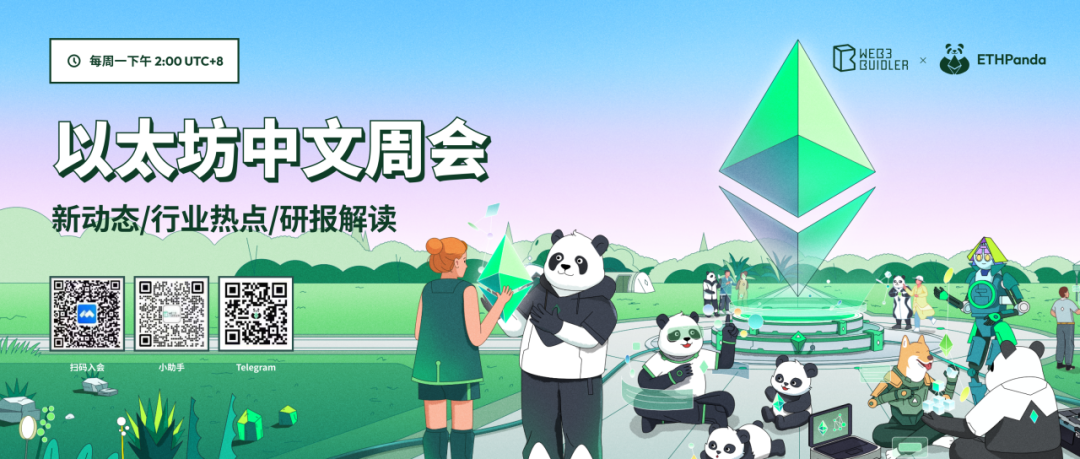
Every Monday at 2 PM (UTC+8), the Ethereum Chinese Weekly invites renowned project engineers, KOLs, and others from the Web3 industry to share insights on Ethereum industry topics, interpretations of well-known institutional research reports, analyses of new projects, hot topic reviews, and more.
The "Ethereum Chinese Weekly" (hereinafter referred to as "Weekly") gathers the wonderful content from the "Ethereum Chinese Weekly Meeting," capturing the latest news and in-depth analyses, continuously delivering the freshest and most substantial content to you.
The Ethereum Chinese Weekly Meeting and the "Weekly" are jointly initiated by Web3BuidlerTech and ETHPanda, with support from communities like LXDAO.
Together with you, we are building an information bridge for Chinese Ethereum.
Ethereum Chinese Weekly Video
The exciting content of this issue can be accessed via the following link, or click "Read the original text":
YouTube:
https://youtu.be/66NOgNeh4yY
Materials for this issue:
https://www.notion.so/web3buidler/Web3BuidlerTech-702bd1ab80a7422586f1edac1917fa9c
Table of Contents
This issue of the "Weekly" consists of 2 parts, taking approximately 10 minutes to read.
- Overview of Industry Information from Last Week
Blockchain News
Data Trends
- In-Depth Content Analysis
Foresight News Interview: Vitalik, 42 Days in Chiang Mai
Analysis of Beam Chain
Lisk Migration to OP Stack Mainnet for Alt-L1
ERC-4337 Shared Memory Pool Officially Launched on Ethereum Mainnet, Arbitrum, and OP
What is the Necessity of Unichain? An Initial Exploration of Unichain
Introducing Kailua: Upgrading OP Rollup to Hybrid ZK Rollup
Overview of Industry Information from Last Week
(November 11 to November 17)
Blockchain News
- Ethereum co-founder Vitalik Buterin stated in an interview with Foresight News: "On the internet, many people say things that I find strange, such as the idea that Ethereum's values are useless, and that crypto is a gambling market. However, in the Ethereum community, there are some people, including many Chinese, whose goal in participating in Ethereum is because we have some values and life ideals that we particularly care about. We want to create an open world, a decentralized blockchain and platform, and we will develop sustainable applications that contribute to a better society."
Additionally, when asked about his views on Solana, Vitalik stated: "I think they are really much more centralized than Ethereum. First, running a node on Solana is much harder than running a node on Ethereum; second, Solana's PoS is more centralized; third, there are more things in the community that are directly supported by the Solana Foundation. Moreover, the demand for decentralization in Solana's applications is much lower than in Ethereum. I think their market goals are really different from those of Ethereum."
Learn more:
https://foresightnews.pro/article/detail/71510
- Ethereum founder Vitalik Buterin delivered a speech at DevCon SEA, stating that in the future, he will promote a smaller number of ETH staking and reduce node operation requirements, including the implementation of stateless clients, light clients, and full-chain SNARKs.
Speech video:
https://app.devcon.org/speakers
- In a Devcon panel discussion, Vitalik Buterin, Stephen Goldfeder, Ben Jones, and Jesse Pollack discussed the challenges faced by Ethereum and its rollup-centric roadmap.
Vitalik Buterin stated: Currently, whenever users operate across multiple chains, they need customized solutions. The ideal Ethereum experience should be like using a credit card in Web2, where everything is seamlessly connected in the background. "If Ethereum cannot reach this level of experience, it will lose to other solutions that can."
Stephen Goldfeder emphasized that users should not be troubled by the complexity of the infrastructure and advocated for a "Unified Ethereum," envisioning a seamless cross-chain transition within the ecosystem.
Vitalik Buterin also stressed the need to simplify cross-chain asset flows.
Ultimately, the panel clarified a common mission: to enhance user experience without compromising the decentralized spirit of Ethereum, aiming to build a user-centered rather than chain-centered ecosystem.
Learn more:
https://app.devcon.org/schedule/HZCDFP
- On November 12, at Devcon, Ethereum Foundation (EF) core researcher Justin Drake announced the proposal to reset Ethereum's consensus layer, Beam Chain.
Drake stated that the existing Beacon Chain (Ethereum's consensus chain) has been running for five years. Beam Chain will improve aspects such as block generation, staking mechanisms, and cryptographic consensus to maintain high security and enhance performance. Beam Chain is expected to finalize specifications in 2025, begin coding and testing in 2026, and then consider deploying the mainnet.
Speech video:
https://app.devcon.org/schedule/8GH8TR
- The permanent storage network Arweave released its 2.8 protocol upgrade, introducing a new packaging format (Composite Packing) that improves network efficiency, scalability, and energy efficiency. The technical highlights of Arweave 2.8 include:
Allowing miners to utilize slower storage devices while maintaining network performance, significantly reducing hardware requirements for node operators;
Further enhancing network security by implementing improved anti-ASIC measures;
Optimizing the blockchain synchronization process, reducing the time required for synchronizing full nodes.
Learn more:
https://x.com/perma_daoCN/status/1851523919196631258
- According to The Block, the Ethereum Layer 2 network Lisk has launched on the mainnet and announced an airdrop plan.
The airdrop event will start on November 21, with the first season lasting four months. Lisk was initially launched in 2016 as a Layer 1 blockchain and transitioned to Ethereum Layer 2 in December 2023, shifting towards RWA and a decentralized physical infrastructure network. Lisk is based on the Optimism Layer 2 development framework OP Stack and Gelato's aggregation-as-a-service platform, while migrating its native token LSK to Ethereum.
Learn more:
https://x.com/TheBlock__/status/1856260677632942144
- The Ethereum Layer 2 network Starknet officially announced that it will launch STRK token staking functionality on the mainnet on November 26.
This feature has been extensively tested on the Sepolia testnet and is about to enter the first phase of deployment.
According to the official announcement, there are two ways to participate in staking: to become a validator, one must stake at least 20,000 STRK and run a full node; to become a delegator, one only needs to hold STRK tokens and choose from the available validator list. Whether as a validator or a delegator, unstaking requires a 21-day lock-up period.
Learn more:
https://x.com/Starknet/status/1856213343528464458
On November 11, at the FIL Bangkok main stage event hosted by the Filecoin Foundation, various teams in the Filecoin ecosystem announced new data storage solutions, marking the expansion of Filecoin's capabilities and the beginning of a new era. The newly launched Akave and Storacha are entirely new Filecoin Layer 2 (L2) solutions, representing a significant step towards maturity for the network, enhancing its ability to meet the storage needs of more data clients.
The Conflux Foundation announced the launch of an incentive program to promote the development of the PayFi ecosystem on Conflux.
The Algorand blockchain recently announced that it will launch a staking reward program in December, which will go live after the consensus mechanism upgrade. At that time, block rewards will begin to be paid in real-time to validators who successfully propose blocks to the L1 blockchain. Rewards will start at 10 ALGO per block and decrease by 1% every million blocks. Validators will also receive 50% of the transaction fees for the blocks they successfully propose.
Near Protocol has launched a new alpha cross-chain AI agent that allows users to exchange any asset for any other asset simply by signing a transaction.
CertiK issued a statement on X, indicating that it has recently received a large number of requests for help from users of the DEXX platform, who reported that their account assets had been emptied. After verification, CertiK confirmed that this security incident occurred on the Solana chain, which is not covered by CertiK's audit. CertiK stated that the main reason for the incident was improper private key management on the DEXX platform, leading to the leak of the official private key. The scale of the stolen funds has been confirmed to exceed 100 million yuan, and the hacker continues to operate.
Dune has launched a new dashboard that maps the extent of cryptocurrency-related cybercrime, recording over 5,500 incidents of hacking, vulnerabilities, and phishing scams across the entire blockchain ecosystem. It is claimed that the platform's "Hacks, Exploits and Social Engineering Dashboard" is one of the most comprehensive efforts to quantify cryptocurrency crime to date.
Data Trends
- L2BEAT data (as of November 21, 2024):
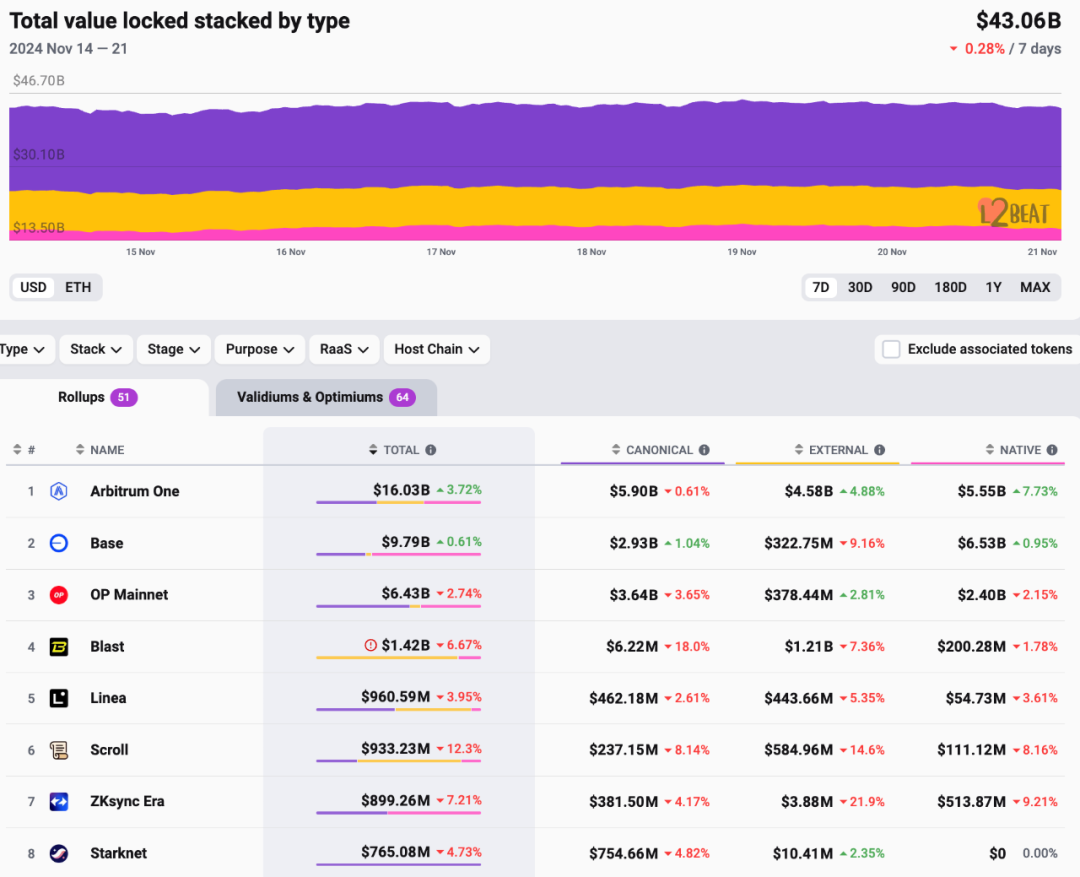
Learn more:
https://l2beat.com/scaling/tvl
Following Trump's return to the White House, Tether's total value has surged nearly 6% since November 6, reaching over $127 billion. USDC has also grown by about 4%, approaching $37 billion. Meme coins have also shown significant growth.
According to data disclosed by Cointelegraph on the X platform, as the cryptocurrency market rises, NFT weekly sales increased by 94%, with the top three blockchains for NFT sales being Ethereum, BTC, and Solana.
According to Token Unlocks data, this week tokens such as ROSE, ADA, and ENA will experience a one-time large unlock, releasing a total value of over $30 million.
In-Depth Content Analysis
Foresight News Interview: Vitalik, 42 Days in Chiang Mai
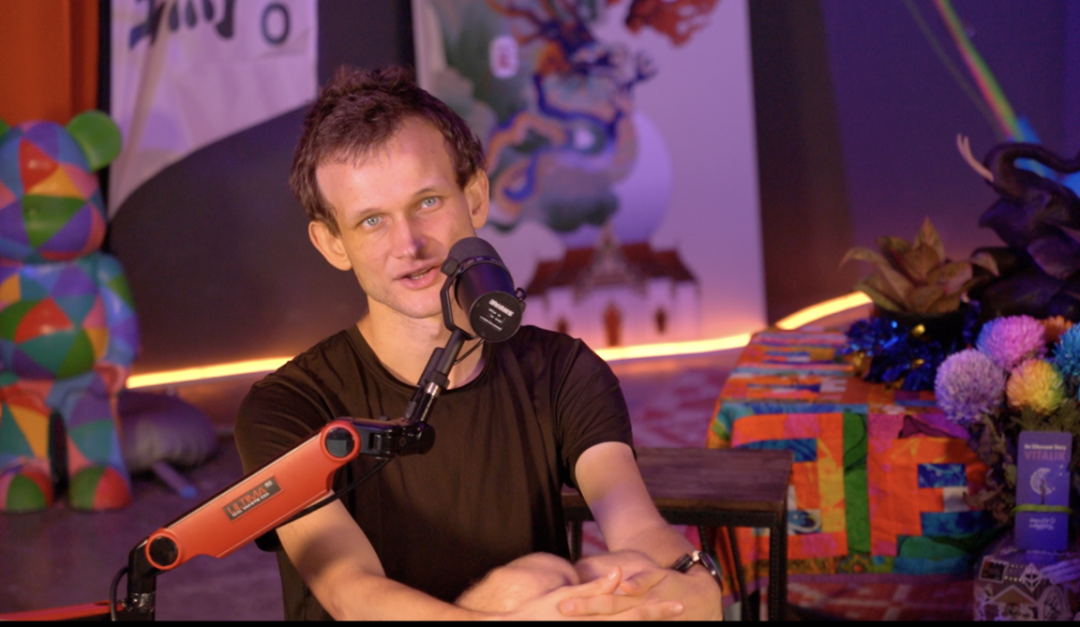
In an exclusive interview with Foresight News, Vitalik shared his latest thoughts on Web3 applications and his observations on Chinese culture. In this experimental "flash city" gathering over 1,000 blockchain practitioners, Vitalik interacted daily with the community, engaging in deep discussions about the future of Ethereum applications. With the maturation of Ethereum technology (such as significantly reduced L2 transaction fees), blockchain applications are poised for a new explosion of opportunities. He emphasized that low transaction fees and fast confirmations are the core drivers of the development of non-financial applications (such as Polymarket and Farcaster). He highlighted Ethereum's decentralized advantages and explored how to address the lack of interoperability in the L2 ecosystem through community support and standardization. He believes that future work will focus on optimizing the mechanisms for public goods and the sustainable development of Web3 applications through experimentation and iteration. On a personal level, Vitalik expressed his love for Chinese culture, including works like "The Three-Body Problem."
Read the original text:
https://foresightnews.pro/article/detail/71510
Analysis of Beam Chain
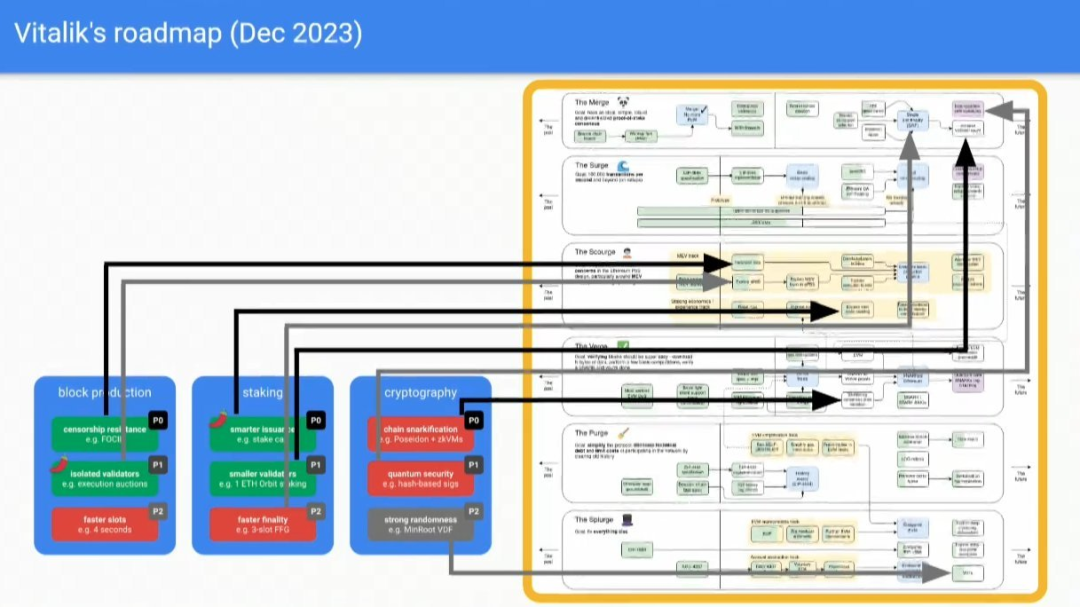
Justin Drake proposed Beam Chain at the Devcon conference, and @yuexiaoyu111 wrote a Chinese analysis article on it. Beam Chain is not an independent public chain but an underlying design optimization aimed at improving performance, featuring faster block confirmations, lower staking thresholds, the introduction of zero-knowledge proofs (ZKP), quantum-safe design, and improvements in consensus mechanisms. According to the plan, Beam Chain will advance in six phases and is currently in the proposal and discussion stage, with an expected launch around 2030. As an important part of Ethereum's long-term planning, Beam Chain aims not only to enhance the efficiency, security, and decentralization of L1 but also to promote the development of application chains in specific areas such as payments, gaming, and DeFi. However, its realization still needs to overcome multiple challenges, including technical compatibility, community consensus, and adjustments to the economic model.
Read the original text:
https://x.com/yuexiaoyu111/status/1856714021275373599
Justin Drake's speech video at Devcon:
https://app.devcon.org/schedule/8GH8TR
Lisk Migration to OP Stack Mainnet for Alt-L1
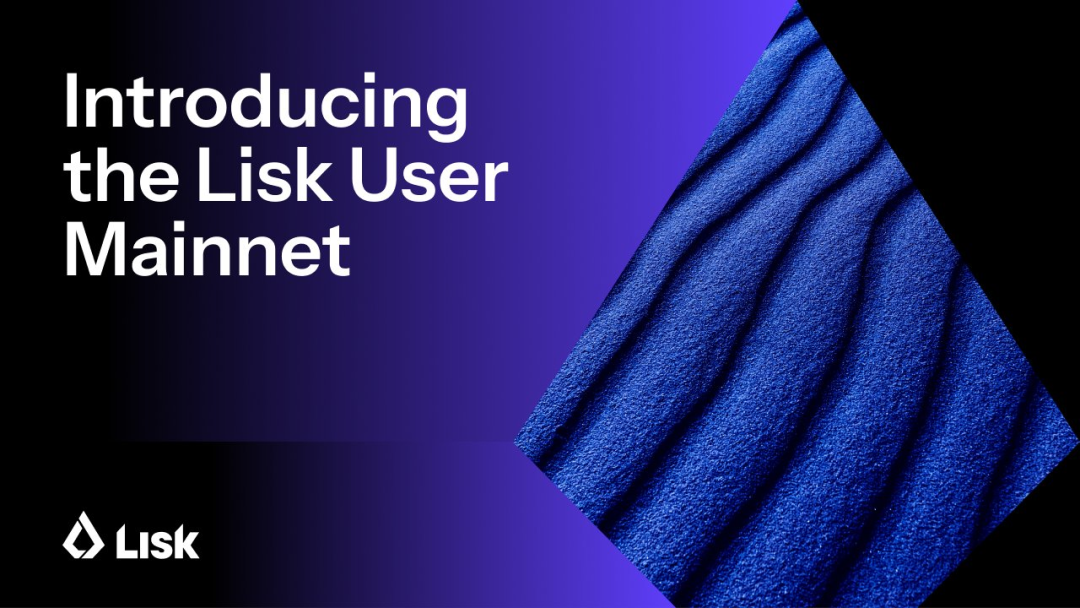
Lisk's user mainnet has officially launched, becoming the first Layer 1 blockchain fully integrated into the Optimism Superchain. Based on Optimism's OP Stack and Gelato's Rollup as a Service (RaaS), Lisk provides efficient development tools, achieving high scalability, low costs, and seamless cross-chain interactions, helping developers create applications with real value. Through deep collaboration with partners such as Circle, Rarible, and LayerZero, Lisk continuously improves its ecological layout and promotes technological innovation. This mainnet release marks a new phase for Lisk, which will provide stronger and more comprehensive support for users and developers through dApp incentive programs and more ecological collaborations.
Read the original text:
https://lisk.com/blog/posts/lisk-user-mainnet-is-live/
ERC-4337 Shared Memory Pool Officially Launched on Ethereum Mainnet, Arbitrum, and OP
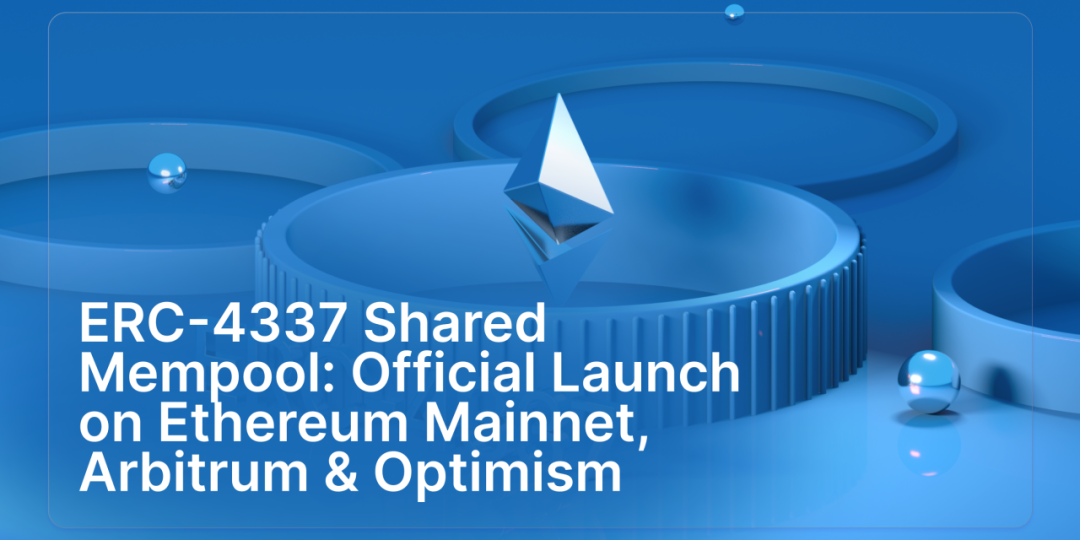
The ERC-4337 shared memory pool has officially launched on the Ethereum mainnet, Arbitrum, and Optimism, marking an important step towards decentralization in account abstraction. The shared memory pool shares user operations (UserOps) among bundlers through a peer-to-peer network, enhancing network reliability and efficiency, avoiding single points of failure, while simplifying the user experience. This feature will gradually expand to Polygon, adopting a "training wheel" model for secure debugging, promoting the sustainability and scalability of the Ethereum ecosystem.
Read the original text:
https://mirror.xyz/0x836F73BE367a8215FCab4C15E5012DaF574b9Ce4/F3CTe3nmBbmXEe9hD2RyezBDueKnBZts1ZmUY8138
What is the Necessity of Unichain? An Initial Exploration of Unichain
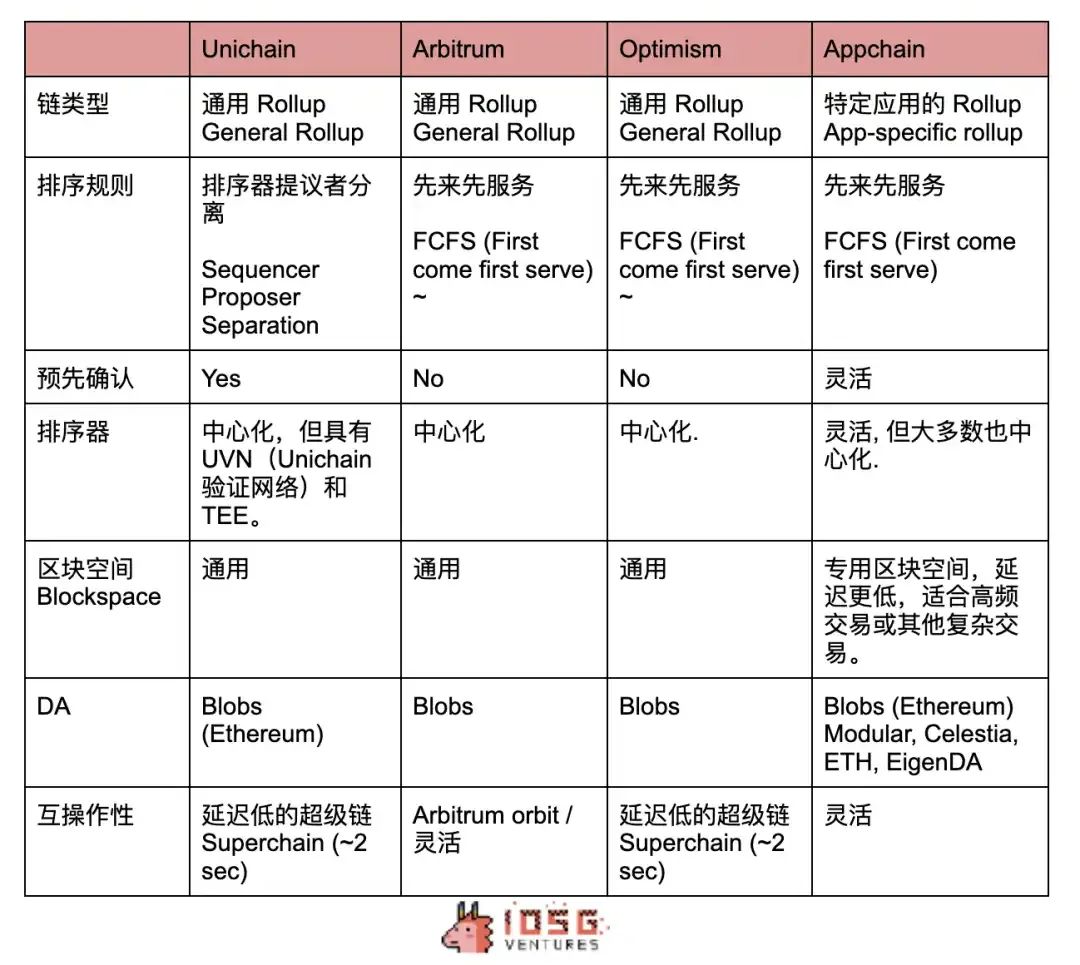
This research comes from IOSG Ventures, deeply analyzing the design philosophy and technological innovations of Unichain. Unichain is an OP Rollup launched by Uniswap, aiming to become a liquidity center in the superchain ecosystem, enhancing the trading experience through innovative technology. Its core includes the separation of block construction and ordering through Rollup Boost, privacy protection based on TEE, MEV redistribution mechanisms, Flashblock technology achieving 250ms fast block times, and the introduction of a validation network (UVN) to improve block finality. At the same time, the $UNI token is endowed with staking and validation functions, further promoting network participation and incentive distribution. Unichain is built on the OP Stack, emphasizing low-latency interoperability and protecting LP and user interests through fair MEV distribution. Although attracting asset migration to the new chain remains challenging, Unichain is expected to become an important center in the DeFi ecosystem due to its fast performance, fairness, and interoperability.
Read the original text:
https://medium.com/iosg-ventures/a-first-look-at-unichain-930c2e61b7de
Chinese translation:
https://news.marsbit.co/20241112164719410560.html
Introducing Kailua: Upgrading OP Rollup to Hybrid ZK Rollup
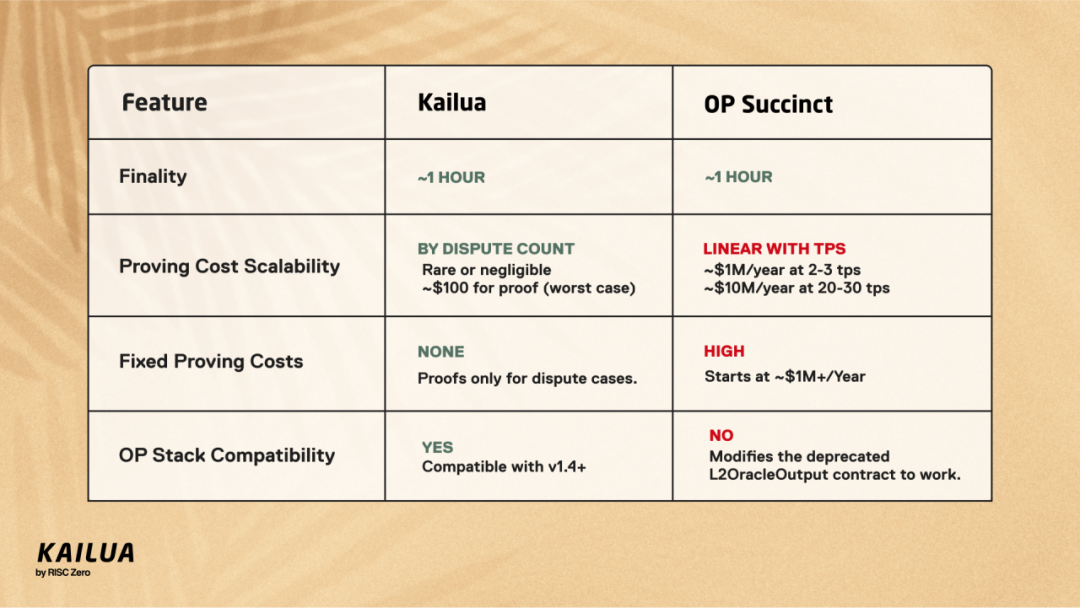
Kailua is a hybrid architecture tool based on OP Stack, providing "low cost" and "fast settlement" advantages for OP chains, creating a third solution between OP Rollup and ZK Rollup. Compared to the 7-day finality of traditional OP Rollup and the high proof costs of ZK Rollup, Kailua achieves finality in about 1 hour through innovative design, triggering zero-knowledge proofs only when disputes arise, while significantly reducing collateral requirements and operational costs. Kailua is fully compatible with OP Stack, supporting flexible validation frequencies, gradually transitioning from occasional validity proofs to full validation per block, allowing developers to enhance Rollup performance and security at their own pace.
Read the original text:
https://risczero.com/blog/kailua-how-it-works
This concludes the content of this issue of the Ethereum Chinese Weekly. Thank you for reading!
Next Monday at 14:00 (UTC +8), we look forward to sharing the new issue with you! (Joining method is at the end of the article)
Image sources are from the internet, please delete if infringing.
Co-initiated Community
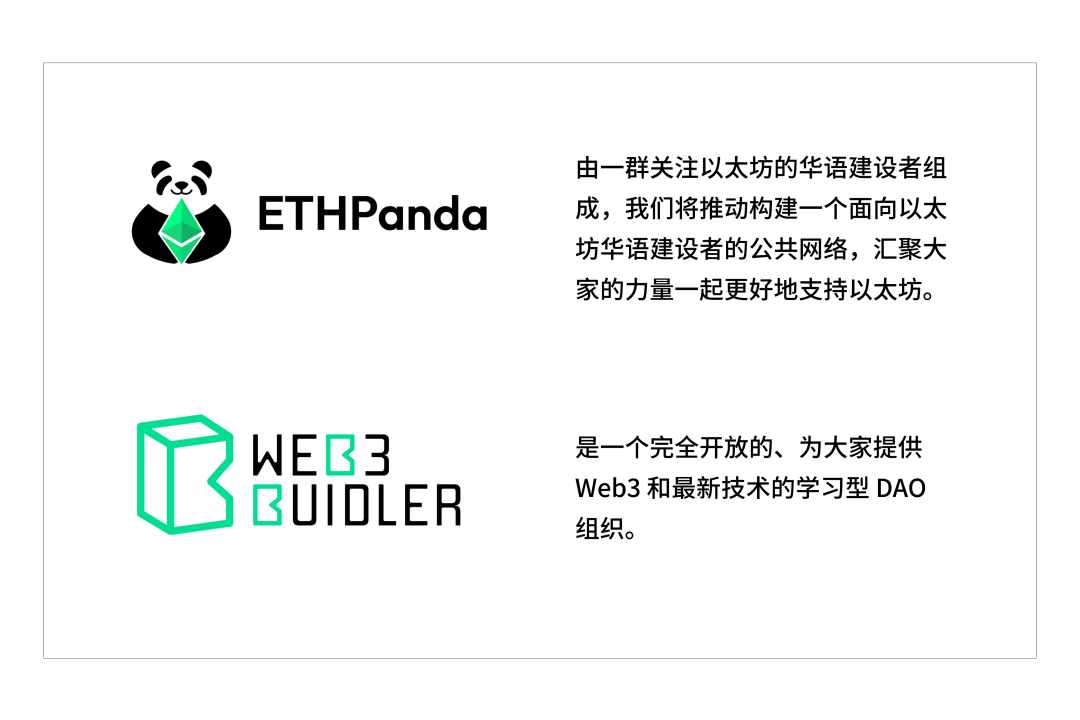
Supporting Community
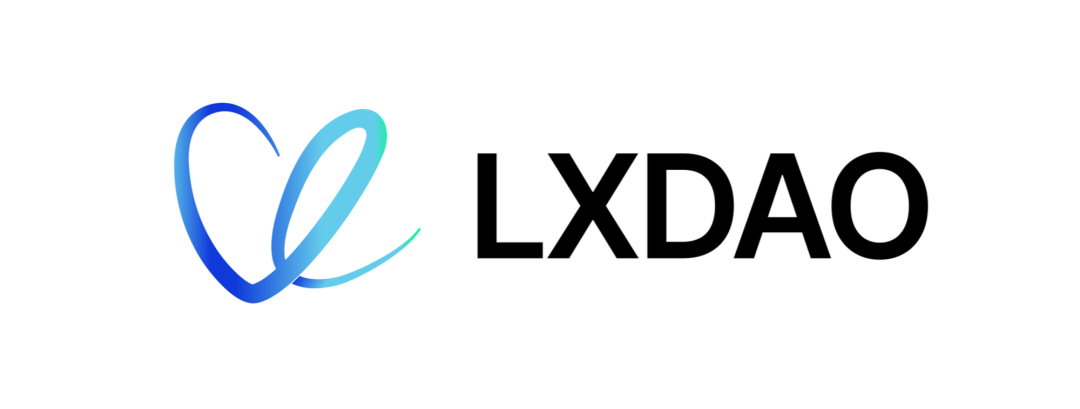
LXDAO is a research and development DAO focused on sustainably supporting valuable Web3 public goods and open-source projects.
Join Us
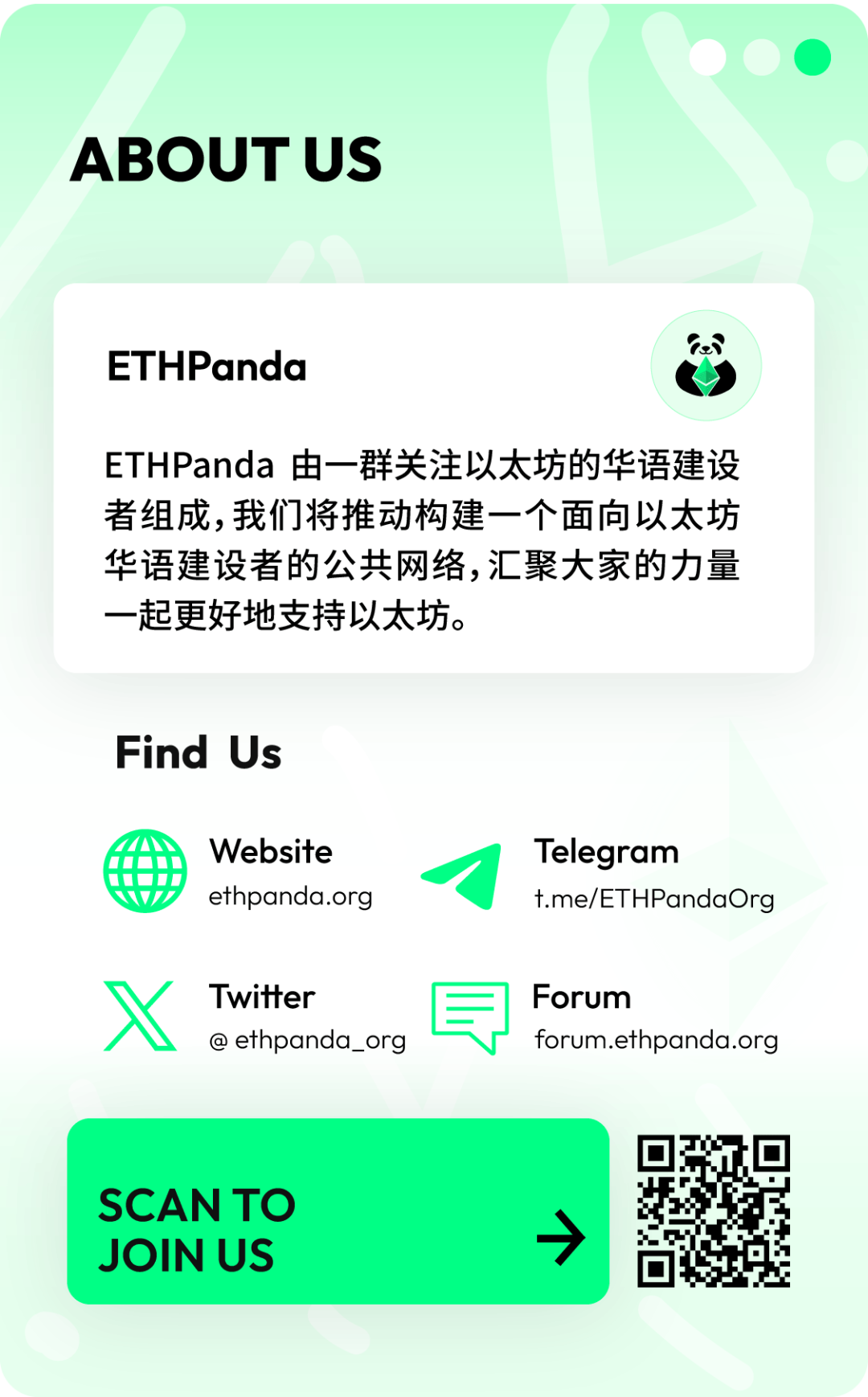

免责声明:本文章仅代表作者个人观点,不代表本平台的立场和观点。本文章仅供信息分享,不构成对任何人的任何投资建议。用户与作者之间的任何争议,与本平台无关。如网页中刊载的文章或图片涉及侵权,请提供相关的权利证明和身份证明发送邮件到support@aicoin.com,本平台相关工作人员将会进行核查。




